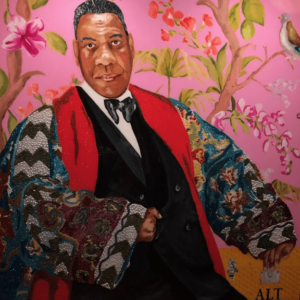by The Cowl Editor on October 10, 2019
A&E - Fashion
by Jennifer Villeda ’20 A&E Staff
Fashion hides one’s struggles in beautiful fabrics, convincing people they have everything together. But it can also serve as a mask to conceal the pain and insecurities of life.
This past week, André Leon Talley brought out the risk-taking fashionistas and artsy minimalists of Providence to gather at the Graduate Hotel for the screening of his documentary, The Gospel According to André.

A former Vogue editor and Brown University alumnus, André Leon Talley has lived a life of stories which he happily shared during the Q&A with the same vibrancy he conveyed in the documentary. He brought the audience into his life growing up in the South as a black, gay man and entering the fashion industry when it was still an exclusive community. His knowledge and love of the business had him coming up through the ranks. He was met with respect and shock as he challenged people’s perception of himself.
When the documentary was first released in 2017, the New York Times interviewed Kate Novak, the film director, who said of the work, “In many ways, this is a classic American success story. André is an important African-American cultural figure.”
He found a way to escape the formidable years of his childhood by focusing on the glamorous pages of Vogue. The magazine was his entrance into the industry where he began to explore himself. Here, he began to silently create more of a cultural context through organizing photoshoots like “Scarlett ‘N the Hood” which saw Lagerfeld creating a homage to Gone with the Wind. They had the African- American model, Naomi Campbell, play Scarlett O’Hara, while white designers such as Manolo Blahnik and John Galliano were servants.
During the Q&A, the amount of respect and enthusiasm people had for him was palpable. Every person who asked him a question started with praises for his work and the path he created for them. It was beautiful to see the way his smile lit up as he humbly accepted their words and gave them compliments; it was a heart-warming exchange between fans of his work and him. He has been one of the people to help make the fashion industry more diverse by interviewing Michelle Obama for the cover of Vogue in 2009 and making the “International Best Dressed List” more inclusive.
Watching his documentary, viewers are captivated by his manner of perceiving the fashion industry—and the world—“through the kaleidoscope of a child,” per the film’s description. Talley finds beauty in every piece, particularly in how people utilize it to communicate themselves to the world. At the Q&A, he pointed out audience members who made statements in their outfits from a sparkling blue jumpsuit with a pearl Gucci belt to a yellow camouflage two-piece with red braids.
His “armor of capes, cashmere, and caftans,” as Anna Wintour described, creates a distance between him and the world. He sees himself as a solitary figure. He told the New York Times, “I live alone. I’ll die alone, I climbed up alone and I’ll go down alone.” The people closest to him are no longer around, his good friend Karl Lagerfeld died in February of this year. After seeing him in person, it is no wonder why he gives a lot to his fans by taking the time to hear their questions and provide advice. The industry has not been kind to him, but he has spent his life making it more diverse and welcoming.